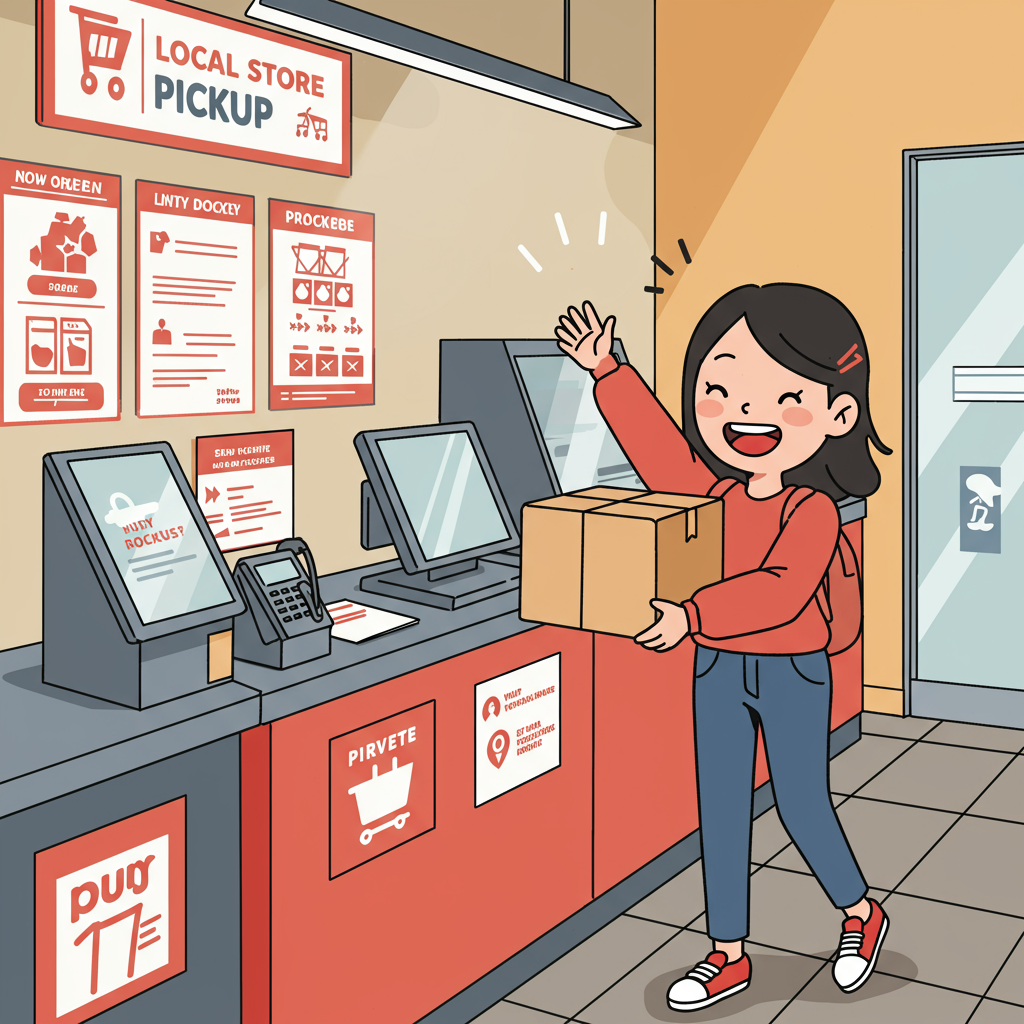A Comprehensive Guide to Setting Up and Optimizing Local Pickup for Your Online Store
As a Shopify merchant, I know you’re always looking for ways to enhance your customer’s experience and streamline your operations. One incredibly effective strategy, especially for businesses with a physical presence, is offering local pickup.
Imagine your customers, eager to get their hands on your products, but perhaps hesitant about shipping costs or delivery times. Local pickup eliminates these barriers, offering them the convenience of ordering online and collecting their purchase at their leisure, often within hours.
For us, the merchants, local pickup is a game-changer. It cuts down on shipping expenses, reduces the risk of lost or damaged packages, and fosters a stronger connection with our local community. It’s also a fantastic way to drive foot traffic to our physical location, potentially leading to additional impulse purchases.
Before we dive into the ‘how,’ let’s quickly consider if local pickup aligns with your business model. Do you have a physical store, a warehouse, or even a home office where customers can safely and conveniently collect orders? If so, then this guide is definitely for you.
Setting up local pickup in Shopify is surprisingly straightforward, but it involves a few key steps to ensure a smooth experience for both you and your customers. I’ll walk you through each one, ensuring you don’t miss a thing.
First things first, log into your Shopify admin. From the left-hand navigation, you’ll want to click on ‘Settings’ at the bottom. This is our central hub for configuring various aspects of our store.
Within the ‘Settings’ menu, locate and click on ‘Shipping and delivery.’ This section is where we manage all our shipping rates, delivery methods, and, of course, local pickup options.
Under the ‘Local pickup’ section, you’ll see an option to ‘Manage.’ Click on this to begin configuring your pickup locations and settings. If you haven’t set up any locations yet, this is where you’ll add your first one.
To add a new pickup location, click ‘Add pickup location.’ You’ll need to provide a clear, recognizable name for this location (e.g., ‘Main Storefront,’ ‘Warehouse Pickup Point’), along with its full address. Ensure the address is accurate as it will be displayed to your customers.
This is a crucial step: setting your pickup availability. You can define specific hours and days when customers can collect their orders. For instance, ‘Monday-Friday, 10 AM – 5 PM.’ Be realistic about your operational hours to avoid customer frustration.
Next, you have the option to add pickup instructions. I highly recommend utilizing this feature! This is where you can provide essential details like ‘Please bring your order confirmation email,’ ‘Ring the doorbell upon arrival,’ or ‘Pickup at the back entrance.’
A good example of pickup instructions might be: ‘Your order will be ready for pickup within 2-4 hours during business hours. Please wait for your “Order is ready for pickup” email before coming. Pick up at the front counter. Have your order number ready.’
If you operate multiple physical locations, you can repeat the process for each one. Shopify allows you to manage distinct pickup settings for every location, giving you great flexibility.
Once enabled, your customers will see ‘Local pickup’ as an option during checkout, alongside your shipping methods. They’ll be able to select their preferred pickup location and see the associated instructions.
When a customer places an order for local pickup, it will appear in your ‘Orders’ section just like any other. The key difference is how you fulfill it. Once the item is ready, you’ll mark it as ‘Ready for pickup.’
Marking an order as ‘Ready for pickup’ automatically triggers an email notification to your customer, informing them that their item is available. This is incredibly convenient and keeps them in the loop.
You can customize the content of these notification emails (and others) by going to ‘Settings’ > ‘Notifications.’ I encourage you to personalize these messages to match your brand’s voice and provide any additional helpful information.
Once the customer has successfully collected their order, it’s vital to mark the order as ‘Picked up’ in your Shopify admin. This updates the order status, helps with inventory management, and completes the fulfillment cycle.
Clear communication is paramount. Ensure your website, product pages, and checkout process clearly state that local pickup is an option and provide all necessary details upfront.
If possible, create a designated, easy-to-find pickup area at your location. This minimizes confusion for customers and streamlines your internal process.
Maintain accurate inventory levels. Nothing is more frustrating for a customer than arriving to pick up an item only to find it’s out of stock. Shopify’s inventory tracking is your friend here.
Train your staff on the local pickup process. They should know where to find orders, how to verify customer identity (if necessary), and how to mark orders as picked up.
Don’t forget to market your local pickup option! Announce it on social media, include it in your email newsletters, and add banners to your website. Let your local community know about this convenient service.
What happens if a customer doesn’t pick up their order? Establish a clear policy for unclaimed items. How long will you hold them? Will you offer a refund or store credit? Communicate this policy if it’s relevant.
What do you think about this article? Did it help you understand the process better and feel more confident about setting up local pickup for your Shopify store?
Implementing local pickup can significantly enhance your Shopify store’s appeal, especially for your local customer base. It’s a win-win: customers save on shipping and enjoy convenience, while you reduce costs and strengthen community ties.
By following these steps and best practices, you’ll be well on your way to offering a seamless and efficient local pickup experience. I truly believe this feature can be a powerful tool for growing your business and connecting with your customers on a deeper level.






